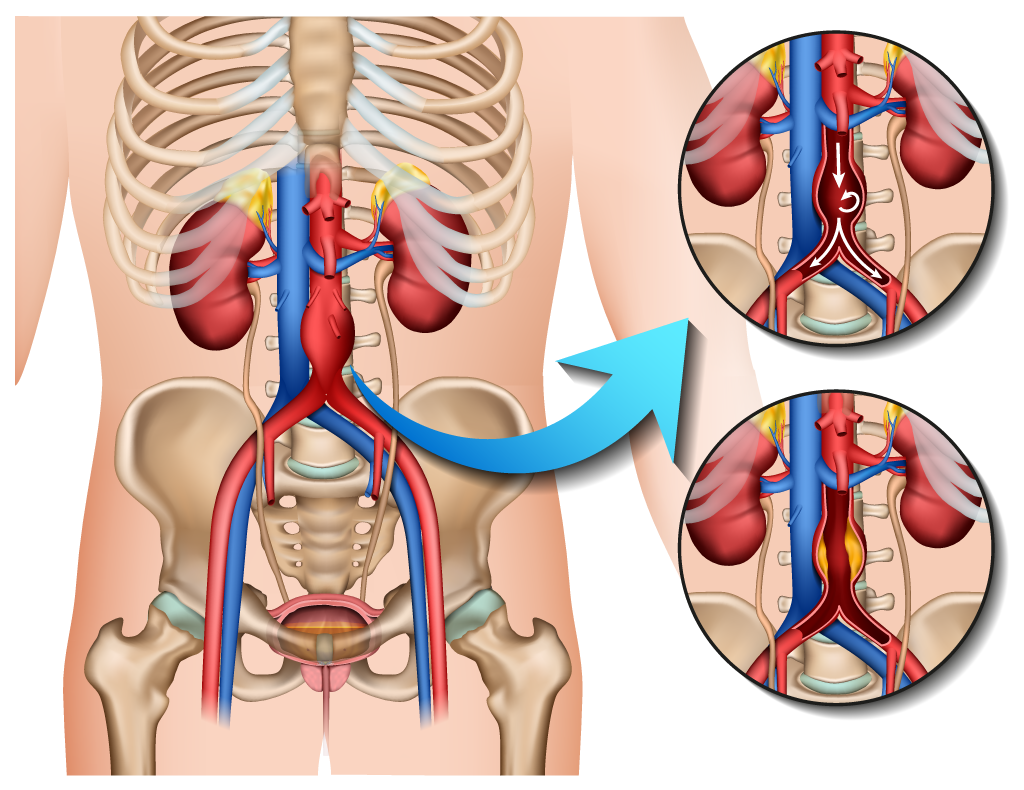Aneurysms
An aneurysm is an abnormal enlargement of a blood vessel. The most common type of aneurysm is the abdominal aortic aneurysm (AAA). The aorta is the largest blood vessel in the body, extending from the heart down to the level of the belly button. Abdominal aortic aneurysms can be one of the deadliest diseases if not detected and treated early.
AAAs involve the portion of the aorta between the rib cage and the belly button. Most aneurysms get larger over time, and if they are allowed to get large enough, many of these AAAs will rupture. Once an aneurysm has ruptured, approximately 85% of individuals will die as a result. Unfortunately, AAAs tend not to cause symptoms until they rupture, making early detection difficult but necessary.


